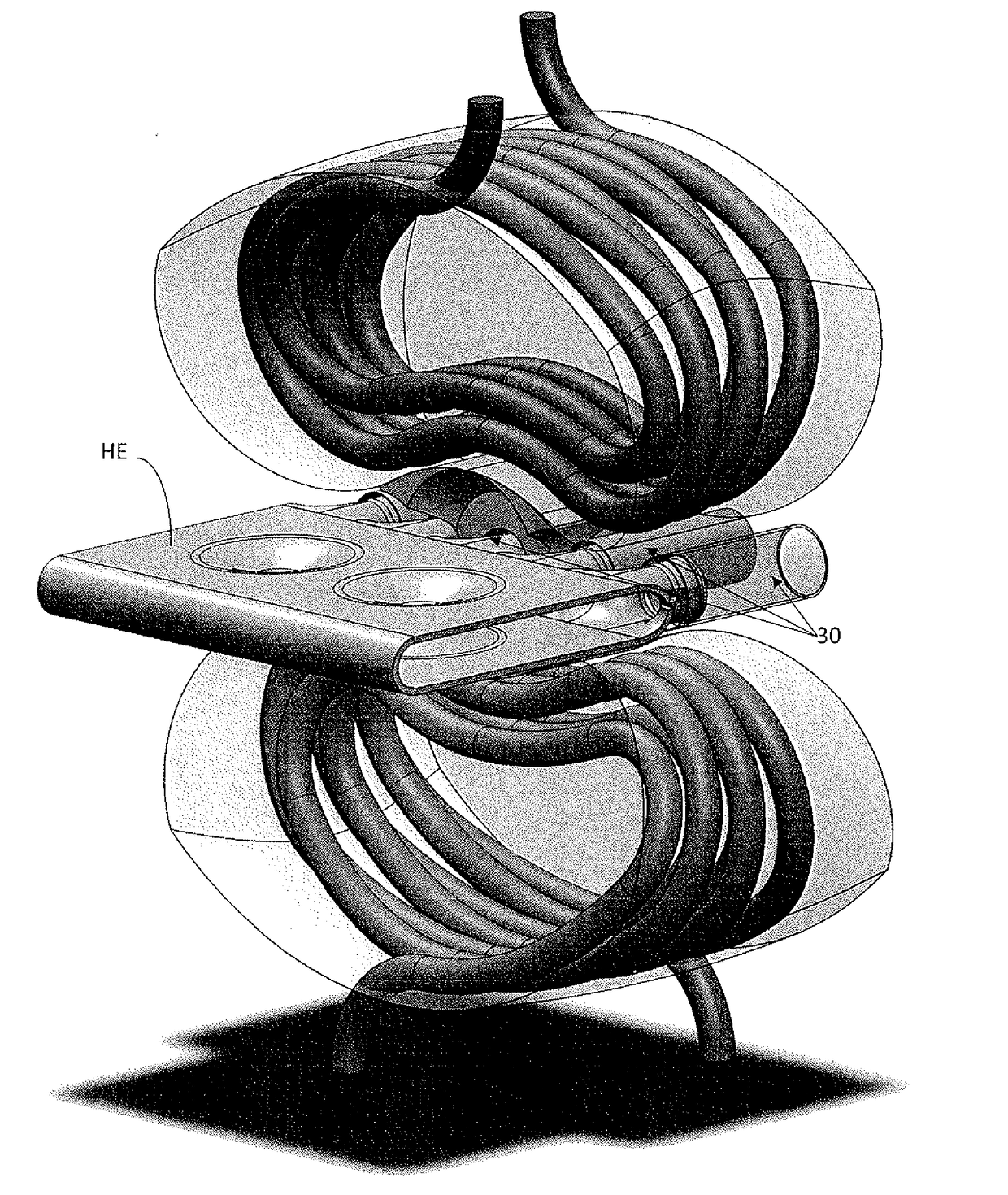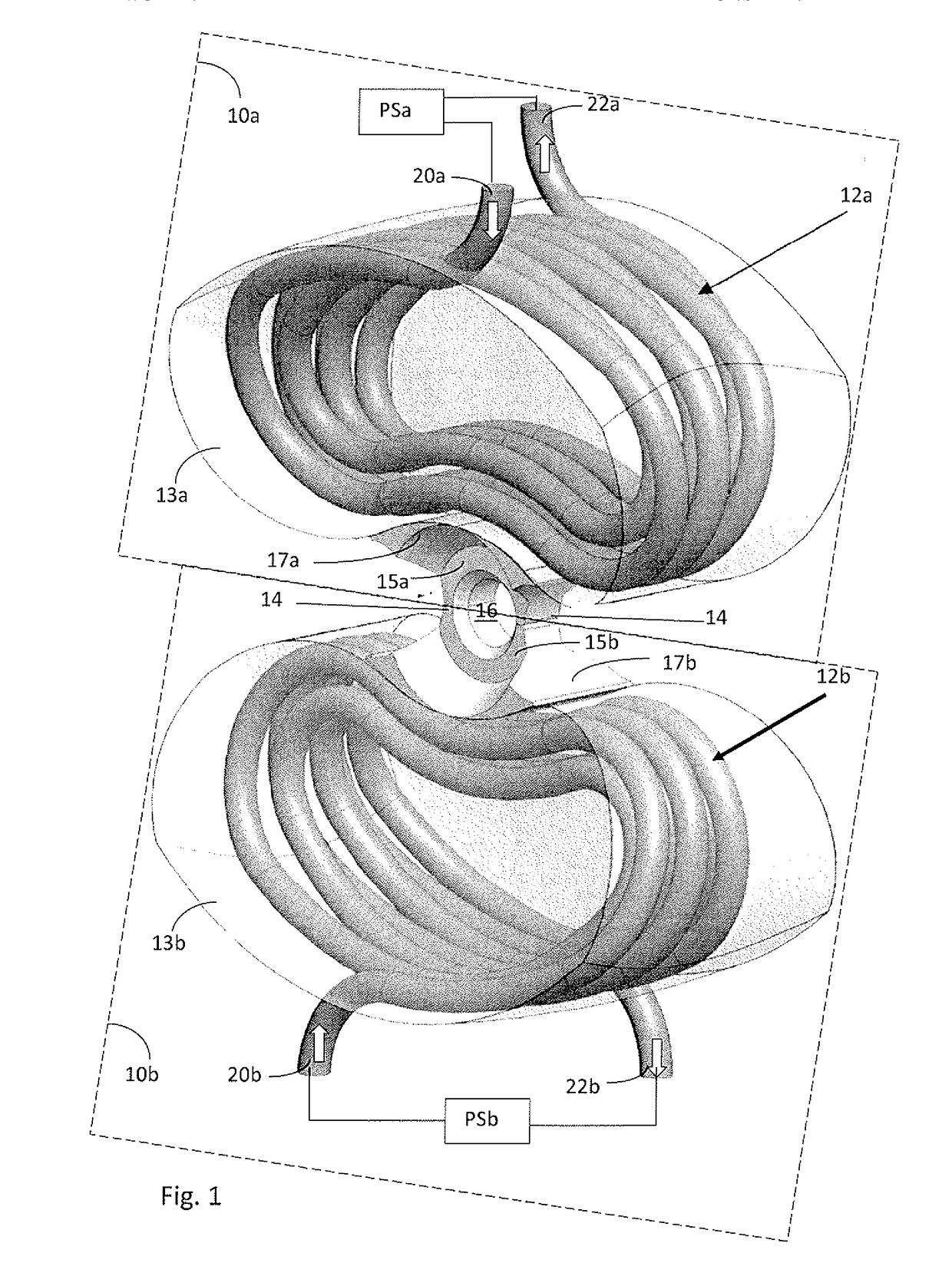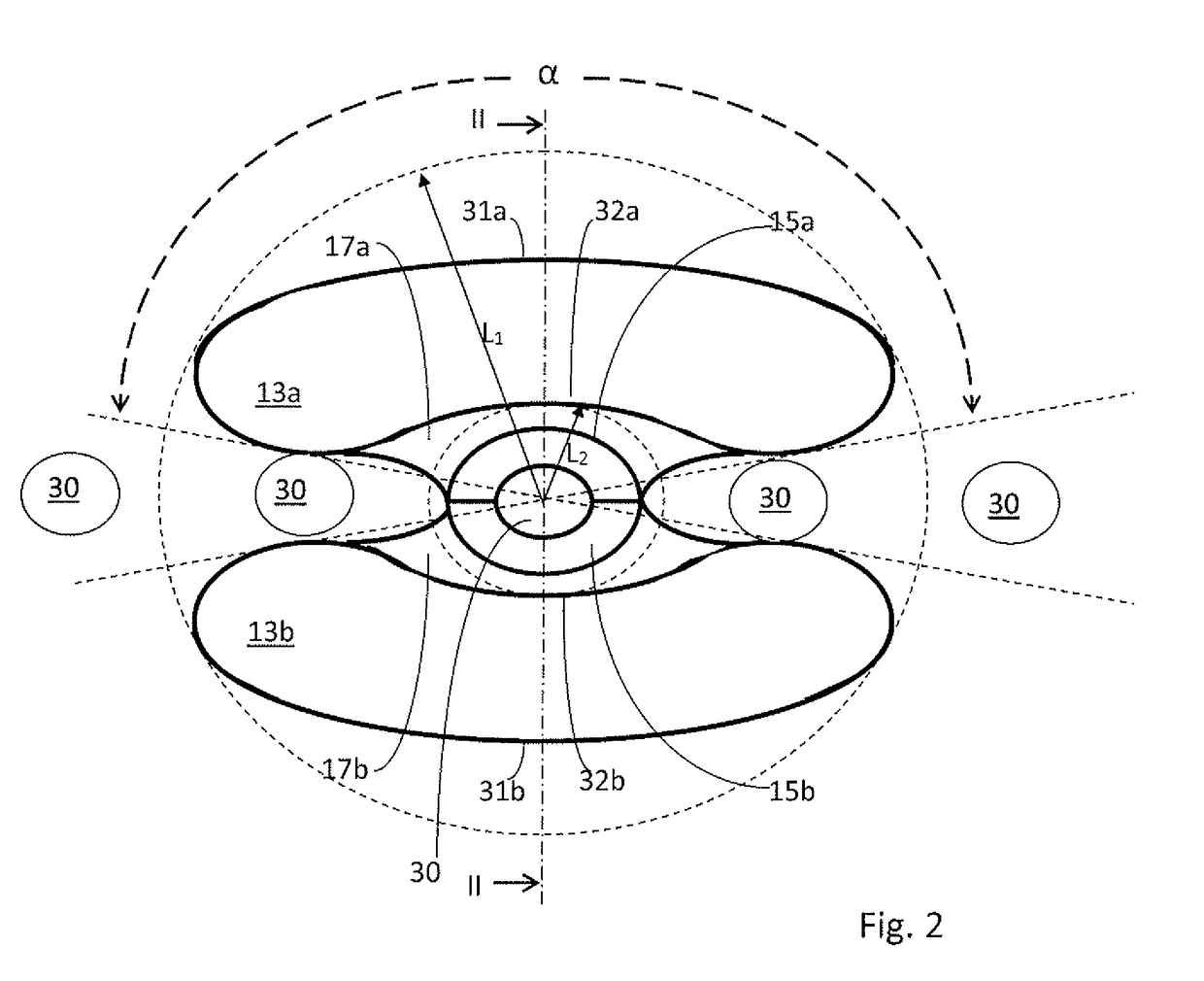Welding head for magnetic pulse welding of tubular profiles to a cylindrical inner member
a technology of magnetic pulse welding and tubular profile, which is applied in the direction of non-electric welding apparatus, manufacturing tools, other domestic objects, etc., can solve the problems of inability to weld closed tubular structures, imposed significant restrictions in application, and the mpw process may require a much higher repulsion for
- Summary
- Abstract
- Description
- Claims
- Application Information
AI Technical Summary
Benefits of technology
Problems solved by technology
Method used
Image
Examples
Embodiment Construction
[0037]As seen in FIG. 1 is the weld head for magnetic pulse welding made as two independent weld head halves 10a and 10b, each half including at least one uninterrupted coil winding 12a and 12b respectively. The halves are brought together via abutting contacting surfaces 14, which encircles a work piece receiving zone 16. Each coil winding 12a and 12b is connected to an independent power source PSa and PSb, such that each coil winding could be controlled independently of the other coil winding.
[0038]Similar parts in upper and lower weld head half in figure are numbered with same numbers but with appendix “a” if located in upper half and with appendix “b” if located in lower half.
[0039]The design with two independent weld head halves enable the weld head to be moved into and out of contact with the welding position of the work piece located in the work piece receiving zone 16. Each weld head half includes at least one coil winding 12a / 12b, which have ends 20a,22a / 20b,22b connected t...
PUM
| Property | Measurement | Unit |
|---|---|---|
| central angle | aaaaa | aaaaa |
| area | aaaaa | aaaaa |
| velocity | aaaaa | aaaaa |
Abstract
Description
Claims
Application Information
 Login to View More
Login to View More - R&D
- Intellectual Property
- Life Sciences
- Materials
- Tech Scout
- Unparalleled Data Quality
- Higher Quality Content
- 60% Fewer Hallucinations
Browse by: Latest US Patents, China's latest patents, Technical Efficacy Thesaurus, Application Domain, Technology Topic, Popular Technical Reports.
© 2025 PatSnap. All rights reserved.Legal|Privacy policy|Modern Slavery Act Transparency Statement|Sitemap|About US| Contact US: help@patsnap.com



